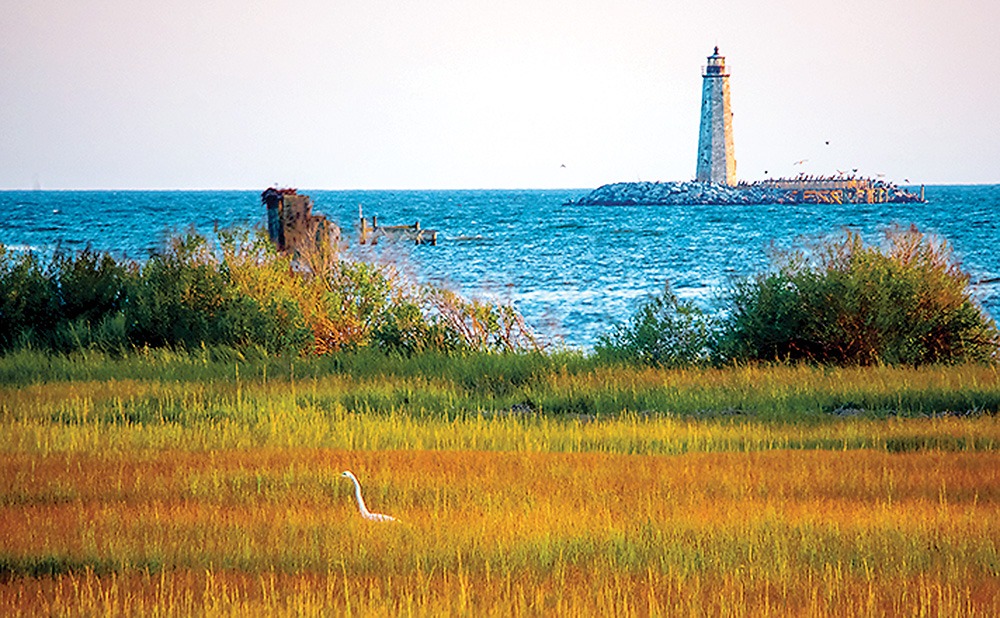
Exploring the hidden gems of the region’s Natural Area Preserves
by Jackie Nunnery –
Spring is here with its longer days, budding plants and the arrival of songbirds. It’s time to get out of the house, enjoy nature at its most fertile and shake off the gloom of isolation. When feeling out of sorts, as many are during this time, there is no better medicine than going outdoors and connecting with nature.
While nature is the perfect cure for mind and body, enjoy it safely and practice social distancing. A visit to one of the region’s Natural Area Preserves is a great solution since unlike many parks, they are designed for smaller numbers of people and those listed here are still open to visitors. For access and directions, it is still recommended to check https://www.dcr.virginia.gov/natural-heritage/natural-area-preserves/.
Managed by the Virginia Department of Conservation and Recreation (DCR), the system of 63 Natural Area Preserves that encompass nearly 60,000 acres highlights the natural beauty and preserves some of the rarest species habitats in Virginia. Unlike parks where the focus is on people and recreation in a natural setting, preserves are less about recreation and more about preservation. There are plenty of hiking trails and viewing stations, but it is more about experiencing nature while keeping the sensitive resources protected.
Since the focus in nature preserves is on…nature, one needs to be prepared for the experience. Most preserves do not have park-like conveniences such as restrooms, trash cans, drinking water or on-site staff. Plan ahead on what to bring and don’t leave any of it behind when leaving.
Another way the DCR encourages smaller crowds is by limiting parking. Lots at these sites are small, at most accommodating up to 20 cars. If the lot is full, return at another time; don’t park along roads or anywhere else that is not designated parking.
There are seven Natural Area Preserves in the Northern Neck and Middle Peninsula, with a variety of habitats, flora and fauna, each changing with the seasons. These preserves are often tucked away but within a short drive, so one feels like they’re getting away from it all, even if they haven’t.
Northern Neck
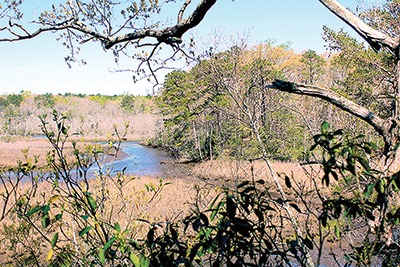
Bush Mill Stream
Knight’s Run (Route 642),
Heathsville
At the mouth of Bush Mill Stream where it flows into the Great Wicomico River, the preserve’s 103 acres of brackish tidal marshes and wooded shores are home to a wide variety of plant and bird life.
A leisurely hike on the wooded trail leads to an observation deck overlooking one of the largest heron colonies in Virginia. According to the DCR, “in some years more than 200 pairs of great blue herons have raised their young” in the marshes and swamps along the stream.
All along the half-mile walk, hikers will be surrounded by huge oaks, hickories, mountain laurel and pine before reaching the marsh overlook. Herons, in addition to other wading birds, are attracted to the tidal marshes and mud flats at low tide, hunting for immature blue crabs and juvenile menhaden who grow up in the estuaries before heading out to the open waters of the Chesapeake Bay.
The wetlands are also home to important plant species such as cord grass, rose mallow and arrow arum.
Dameron Marsh
715 Guarding Point Lane (Route 693),
Kilmarnock
The 316-acre preserve had several homes within its boundaries over the centuries, all of which have been lost to water, erosion and time. The first was a plantation called Guarding, owned by Lawrence Dameron of Suffolk, England who purchased the property in 1655. Leftover landscape plantings can still be seen when one arrives, such as the large mound of snowdrops and a large royal paulownia.
One short walk to the left of the parking lot leads to the ever-changing beach area. Since this is a nature preserve, nothing is done to mitigate or prevent the drift of beach, said Thomas Smith, deputy director of operations for DCR. “We let nature do what it will.” The eastern beach erodes two feet every year while the southeastern beaches are growing. Walking along the beach leads to an interesting find: pieces of old bricks, worn smooth from centuries of wave action, strewn amongst the oyster shells.
The other short walk to the right leads to a boardwalk overlooking the marshes, “one of the most significant wetlands on the Chesapeake Bay for marsh-bird communities” according to the DCR.
In addition to the two short trails, a small “hand-carry” put-in site is available for kayaks or canoes.
Hughlett Point
Balls Neck Road (Route 605),
Kilmarnock
Ten minutes away from Dameron Marsh, this 204-acre preserve includes walks along wooded paths and sandy beaches, as well as observation platforms at the salt marshes. The preserve is a vital habitat for migrating birds as well as native bald eagles, osprey and heron. And it’s not just native birds that enjoy the preserve. Gray fox and river otters have also been spotted, taking advantage of the abundance of life on the land and in the waters.
Those more interested in spotting plants will find wax myrtles, eastern rose mallow, saltmeadow hay and cattails growing in the marshes that make up half of the preserve. Over time, depressions have flooded to create salt ponds behind the beach. Here hikers will find a variety of grasses like widgeon grass and smooth cord grass.
The preserve’s sandy beach hides the threatened northeastern beach tiger beetle. According to the DCR, this “rare, agile little insect” requires “undisturbed beach habitat” to live out their lives. These beetles play an important role on the beach, eating flies and fleas, as well as dead fish and crabs that wash up on shore.
Hickory Hollow
Regina Road (Route 604),
Lancaster
While the coastal preserves have their salt marshes that support a variety of reeds and grasses, this 254-acre preserve is known for its swamp. A rare “coastal plain basic seepage swamp” to be exact, according to the DCR.
Cabin Swamp, at the bottom of a ravine, supports woody plants and trees. Red maples, white ash, cinnamon ferns and orange jewelweed all thrive here. The rare Kentucky Lady’s Slipper Orchid also has been sighted.
Surrounding the swamp is a pine and hardwood forest with a hiking trail, providing a perfect habitat for songbirds and wild turkeys.
This preserve is owned by the Northern Neck Audubon Society.
 Middle Peninsula
Middle Peninsula
Bethel Beach
Bethel Beach Road (Route 609),
Onemo
A trip to Bethel Beach in Mathews County means experiencing the beach in its natural and transformative state.
The constant shifting sands of the beach and dunes are another home to the endangered northeastern beach tiger beetle and a nesting place for the gull-like least tern. This small tern was nearly wiped out in the late 1800s when its feathers were highly sought after for hats.
The strong winds and currents of the Chesapeake Bay continually move the narrow beach, creating ever changing sandbars and mudflats that attract many sanderlings and other shore birds.
Salt marshes are behind the beach and are the most likely place to spot a heron among the black needle rush, saltgrass and groundsel tree. The marsh is also a nesting site for the northern harrier, a hawk more commonly found in northern regions.
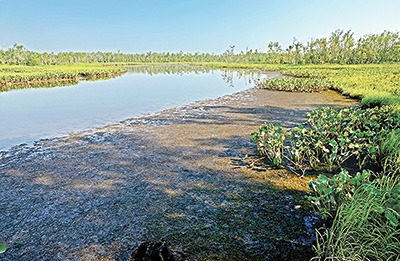
Cumberland Marsh
Cumberland Road (Route 637),
New Kent
Managed by the Nature Conservancy (NC), this 1,193-acre preserve along the Pamunkey River features an ADA-accessible boardwalk and marsh observation point at the Vandell Preserve.
According to the NC, the Cumberland Marsh supports “the greatest biological diversity on the Pamunkey River, including nesting bald eagles, osprey, great blue herons and egrets as well as the sensitive joint-vetch, a member of the pea family listed as threatened under the federal Endangered Species Act.”
New Point Comfort
Lighthouse Road (Route 600),
Mathews
With stunning views of the New Point Comfort Lighthouse, Chesapeake Bay and Mobjack Bay, this Nature Conservancy-managed preserve is a prime stopover on the Atlantic Flyway. Stretching all along the North American East Coast, the flyway is a great way to see migratory birds on their travels.
In addition to migratory birds, the 105-acre preserve is home to bald eagles, osprey, heron and hawks.
An ADA-accessible boardwalk through the salt marshes leads to an observation point on Mobjack Bay with views of the historic New Point Comfort Lighthouse, commissioned by Thomas Jefferson in 1801. It is the third oldest lighthouse standing on the Chesapeake Bay and the 10th oldest in the U.S.
A nature trail at the edge of the wetlands also provides opportunities for birdwatching.
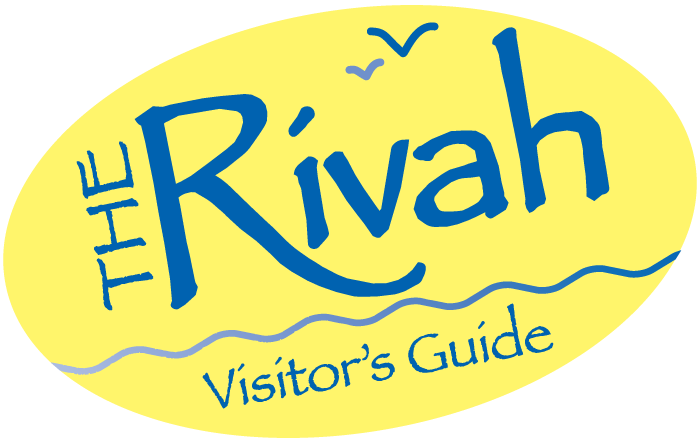
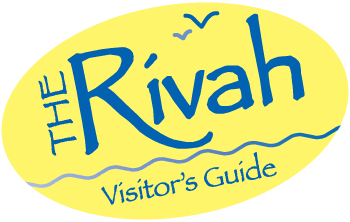
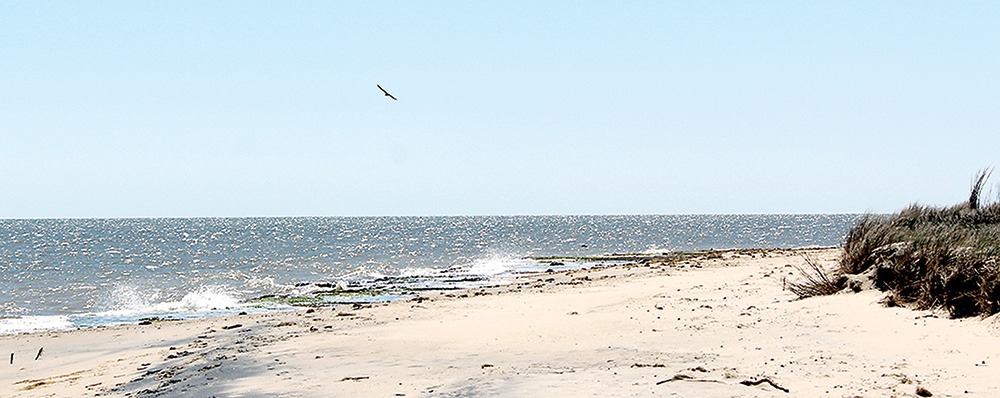 Middle Peninsula
Middle Peninsula